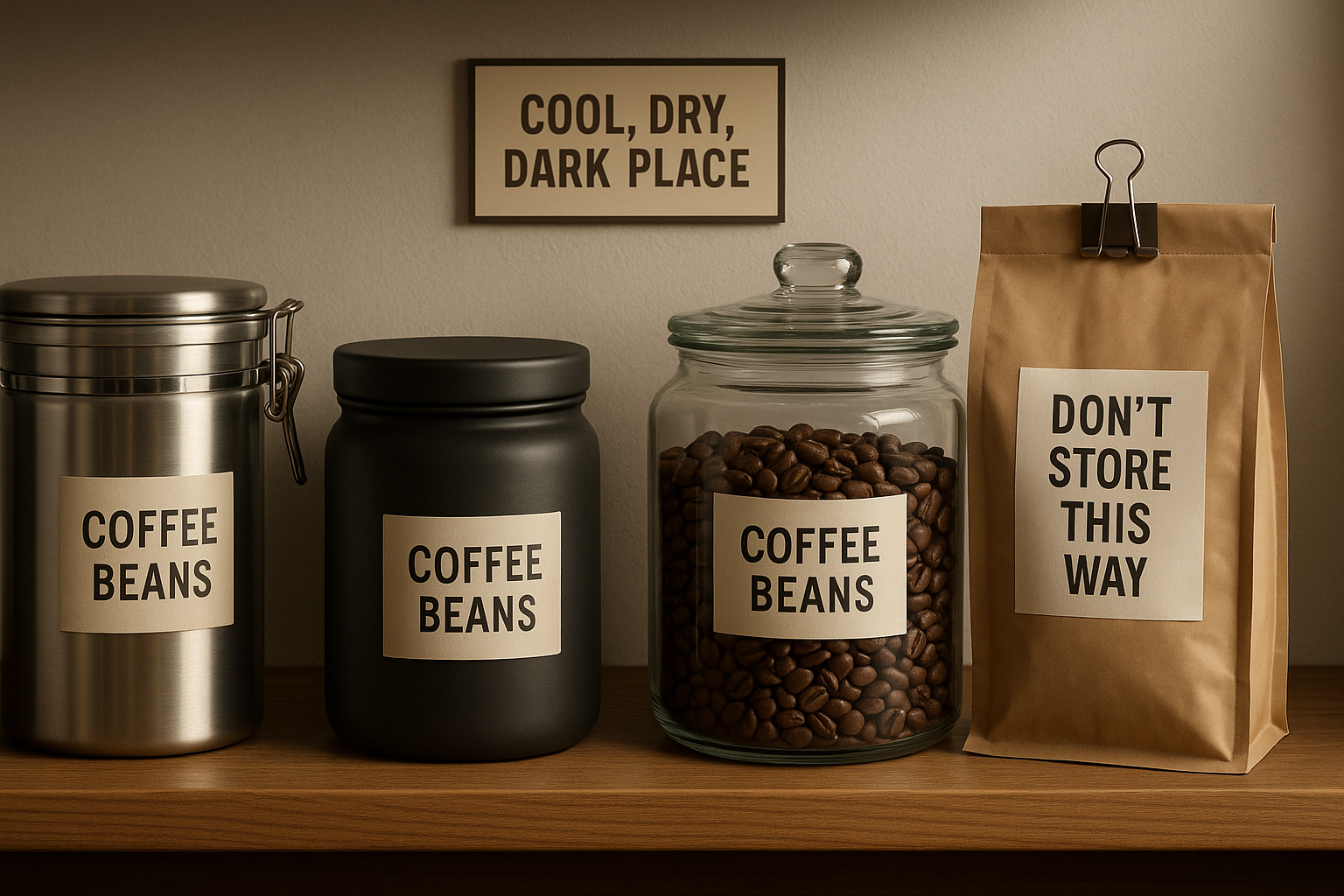Freshness is one of the most overlooked elements in brewing great coffee. You could have high-end beans and a top-notch grinder, but if your coffee isn’t stored properly, the flavor will fade fast. In this guide, you’ll learn exactly how to store coffee beans to preserve their aroma, flavor, and overall quality for as long as possible.
Why Coffee Freshness Matters
Coffee is a perishable product. Once roasted, it begins to release carbon dioxide and interact with oxygen—causing the beans to oxidize and stale over time.
Signs of stale coffee:
- Dull, flat flavor
- Bitter or sour notes
- Loss of aroma
- Weak crema in espresso
Proper storage slows this natural decay, preserving that freshly roasted goodness.
What Affects Coffee Bean Freshness?
Several factors can degrade your beans:
- Oxygen – Speeds up oxidation.
- Light – Breaks down aromatic compounds.
- Moisture – Encourages mold and alters texture.
- Heat – Accelerates chemical breakdown.
- Time – Beans naturally lose flavor over weeks.
The Golden Rules of Coffee Storage
1. Keep It Airtight
Use airtight containers to reduce oxygen exposure. The best options:
- Vacuum-sealed containers
- Glass jars with rubber seals
- Stainless steel canisters with one-way valves
Avoid resealing original coffee bags with clips—they’re not airtight.
2. Store in a Cool, Dark Place
Keep your beans:
- In a cupboard or pantry
- Away from heat sources (like ovens or sunlight)
- At room temperature (18–21°C or 65–70°F)
Avoid the fridge—it’s humid and full of odors.
3. Protect from Light
Use opaque containers or store transparent ones inside drawers. UV light damages flavor compounds, especially in lighter roasts.
4. Don’t Freeze Unless Necessary
Freezing can work, but only under strict conditions:
- Use airtight, moisture-proof bags
- Freeze beans in small portions (avoid repeated thawing)
- Only freeze whole beans, never ground coffee
Tip: If you’re freezing, thaw beans fully before opening to prevent condensation.
Whole Beans vs. Ground Coffee: Storage Lifespan
| Form | Shelf Life (Room Temp) | Shelf Life (Frozen) |
|---|---|---|
| Whole Beans | 2–4 weeks optimal, up to 3 months | Up to 6 months |
| Ground Coffee | 1 week optimal, up to 1 month | Not recommended |
Always grind just before brewing for the freshest flavor.
Best Containers for Coffee Storage
✅ Recommended:
- Fellow Atmos Canister: vacuum-sealed with CO₂ release
- Airscape Container: removes air and is light-proof
- Mason Jars (dark glass): economical and reusable
- Planetary Design Canisters: popular among baristas
❌ Avoid:
- Plastic containers (absorb odors)
- Bags with simple zippers
- Clear glass in bright environments
Bonus Tip: Buy Smaller Batches
If possible, buy coffee in smaller amounts more often. This helps you:
- Consume it while it’s still fresh
- Explore different roasts and origins
- Avoid waste from stale leftovers
How to Know When Beans Are Past Their Prime
While coffee doesn’t exactly “go bad” like milk, it definitely loses quality. Signs include:
- Weak aroma
- Flat taste
- Lack of crema in espresso
- Pale brown grounds after brewing
When in doubt: smell it, brew it, taste it. If it’s lifeless, it’s time to replace it.
Final Sip: Treat Your Beans with Respect
Think of your coffee beans like fresh produce or fine chocolate—they deserve careful handling.
By following these storage tips:
- Use airtight, light-proof containers
- Keep beans cool and dry
- Avoid freezing unless absolutely necessary
- Buy only what you’ll use in a few weeks
You’ll preserve their natural flavors, enjoy more consistent brews, and get the most value from every batch.
